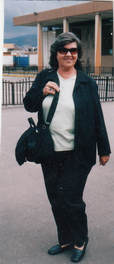 Sherrill, Cuzco Airport
Sherrill, Cuzco Airport "Does anybody even know?"
Sherrill and I were in the little station at Aguas Calientes, Peru, the one nearest the Machu Picchu temples high in the Andes. We'd already checked out of our hotel up at the site, had bused down terrifying hairpin turns to the station, and were waiting to board a train that, it seemed, wasn't coming and if it did come wasn't going anywhere, anyway. We kept hearing fragments of gossip.
"Somebody said an avalanche buried the tracks."
"And the train?"
A shrug: "Maybe still in Cuzco."
"Maybe buried, too, for all we know."
 Waiting for bus after Machu Picchu landslide
Waiting for bus after Machu Picchu landslide "Trapped at Machu Picchu—that'll be a story to tell folks."
"If we ever get out of here."
Jose, our energetic young local guide, confirmed after scurrying around talking with people that melting snow on a nearby peak had washed down tons of mud and rock, covering a section of the only track down the mountain to Cuzco. No train was on the track at the time, although a year and a half before, six people had been killed by mudslides in the same area.
Jose collected the dozen members of our group and took us to a school yard where we joined others from different groups also waiting to leave. During the next hours, he monitored the situation and made sure that we were one of the first groups to get onto the bus convoy that zigzagged down the mountain, around the buried rail tracks, to a station where a local train from Cuzco could fetch us. The situation reminded Sherrill and me of a time in China when a bus nearly went over the side of a crumbling mountain road and we had to walk the rest of the way to the Yangtze.
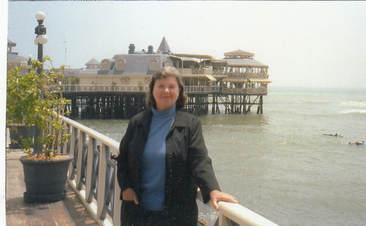 Sherrill on Pacific coast, near Lima
Sherrill on Pacific coast, near Lima The two of us had arrived a few days earlier in Lima, Peru's capital, hoping for an eye-opening look at the country and some of its best known places. That evening, however, we didn't see much of the city, but were hustled off by Victor, our elderly tour director, to our hotel, a sprawling historic building in its own grounds. The hotel was comfortable and the service good, but we would've preferred one centrally located in the old part of the city. Sherrill and I liked to explore on our own whenever we had a chance.
The next morning, we met the rest of our group and were off and running, first to what was called a "local Indian crafts market." It was huge, with a vast array of booths selling handmade wares ranging from toy llamas to silver and gold jewelry to knitted socks and clothes to chess sets of Incas vs. Spaniards. Not our kind of place, Sherrill and I agreed, but then she discovered the one item that she had to have: a hand-sewn wall-hanging about 2 feet by 1 1/2 feet with miniature stuffed cloth figures of a village market in front of mountain peaks, tile-roofed houses, and farmyards, each individual sheep, llama, and human being, each tiny vegetable and piece of fruit, sewn and stuffed and then stitched onto the background to create a surprisingly lifelike scene—a remarkable piece of craftsmanship.
"Can you imagine anybody actually sitting down and making this?" she asked me.
"You could. If you wanted to."
She shook her head, but didn't argue.
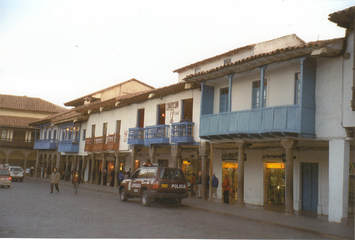 Colonial buildings, Cuzco
Colonial buildings, Cuzco Then Victor took us to do a little sight-seeing on the way back to our hotel, but every time I opened a window on the bus to take a photograph, he rushed over to close it and when I started to wander away from the group when we stopped to visit Lima's cathedral he told me to stay with the others.
"Dangerous!" he told me. "Somebody snatch your camera! Hurt you!"
As far as Sherrill and I could figure out, he seemed to think that his job was to stand between us and contact with local people, which was not our idea of seeing the world.
Our Cuzco hotel, in an old monastery, was perfectly located, in the heart of the colonial city. From there, it was a short walk to the great Plaza de Armas and other places of interest. In fact, we were almost next door to the local archeological museum, but when I asked others in our group if they'd join Sherrill and me exploring it, since it was not part of the tour, everyone begged off. They were too tired.
"Maybe it's the altitude," Sherrill suggested.
We'd already started taking our pills to prevent altitude sickness, so the 10,000 foot height of the city didn't seem to be affecting us much. Since dinner that night wasn't included, I wandered around a bit and found a traditional restaurant several blocks away where Sherrill and I had a fine meal of ceviche, stuffed peppers, and rice and roast chicken. The next day, we discovered that everyone else had either used room service or gone to the hotel dining room. Why come, we wondered, if you weren't curious about the place around you?
The city was worth exploring, despite the altitude and steep cobblestone streets. Many of the buildings lining those narrow streets rose on top of the giant mortarless stones of the Incas, over which another floor of smaller stones had been added by the Spanish, and finally modern bricks. Most of the Spanish-built colonial buildings were fronted with ornate balconies above long covered arcades—well designed to cope with outside weather, whatever it might be.
"Dueling cathedrals," Sherrill quipped when we walked into the vast Plaza de las Armas in the center of old Cuzco.
"It kicked me!" Sherrill exclaimed, pointing to one of the vicunas. "I didn't do a thing and it kicked me."
She wasn't hurt, just annoyed. Why had it kicked her when there were other, better targets around?
We felt as if we were in an extraordinary, magical place, maybe more than at anywhere else we'd been. Nearly every inch of the steep mountainsides seemed to be covered with flight after flight of stone terraces, stone houses, and massive stone temples, some of which looked as if they might have been used for astronomical observations. Oddly enough, we encountered few other visitors.
A tarantula of hideous size and color had made a home in the shower.
"Baby," she said, when she saw the hairy reddish monster standing on tiptoe by the drain. She fetched a rod from the closet, lifted the spider with the end, hurled it out the window, then turned back to me. "Remember, they don't bother you...."
"...If I don't bother them! I know. But I wanted to take a shower."
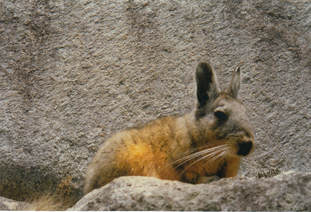 Chinchilla, Machu Piccchu
Chinchilla, Machu Piccchu 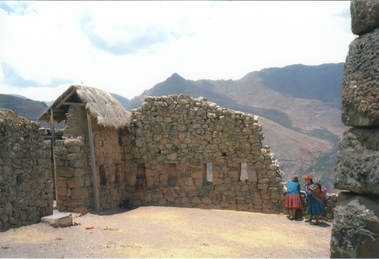 Local women, Inca village, Pisac
Local women, Inca village, Pisac 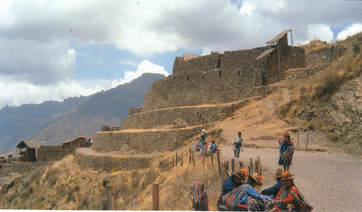 Local villagers trading at Inca terraces, Pisac
Local villagers trading at Inca terraces, Pisac After flying back to Lima the next day, we had a couple of days to see more of the city, although once again Victor kept trying to protect us. Maybe he was afraid that he'd lose his job if something bad happened to one of us. Since the new Lima archaeological museum wasn't included in the tour, Sherrill and I got the hotel to order us a taxi to take us, drop us off, and return a couple of hours later. The driver actually did return exactly when he promised. The museum was crowded with splendid artifacts, but most of them were unlabeled, not even in Spanish. Once again, we saw few other foreign visitors.
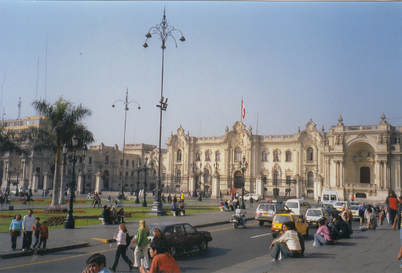 Plaza Mayor, Lima
Plaza Mayor, Lima To be continued....
Please pass the posts on to anybody else you think might enjoy them.
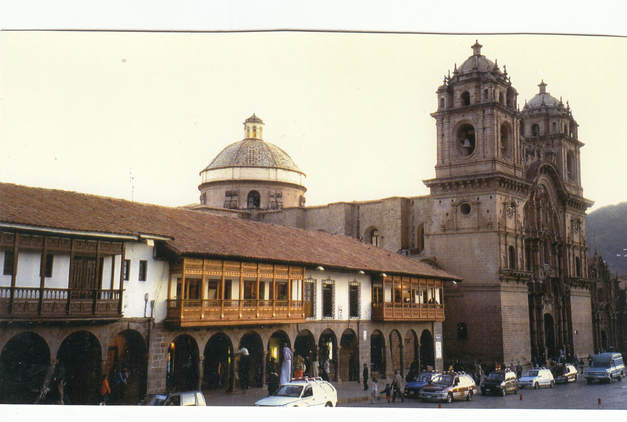
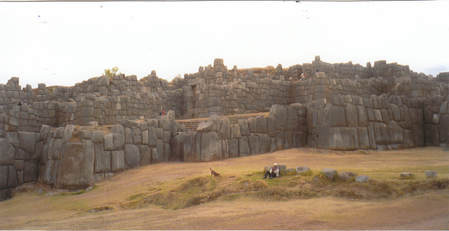
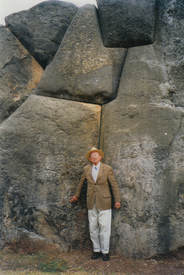
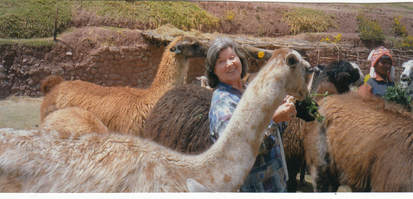
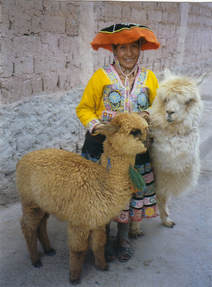
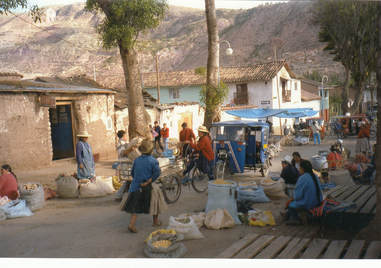
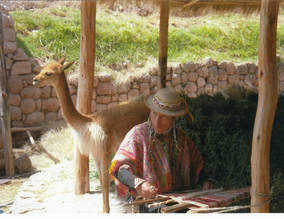
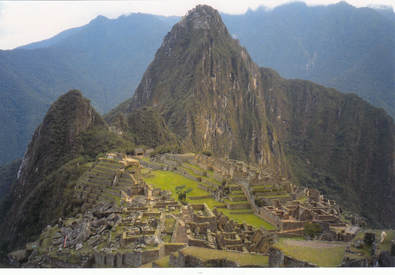
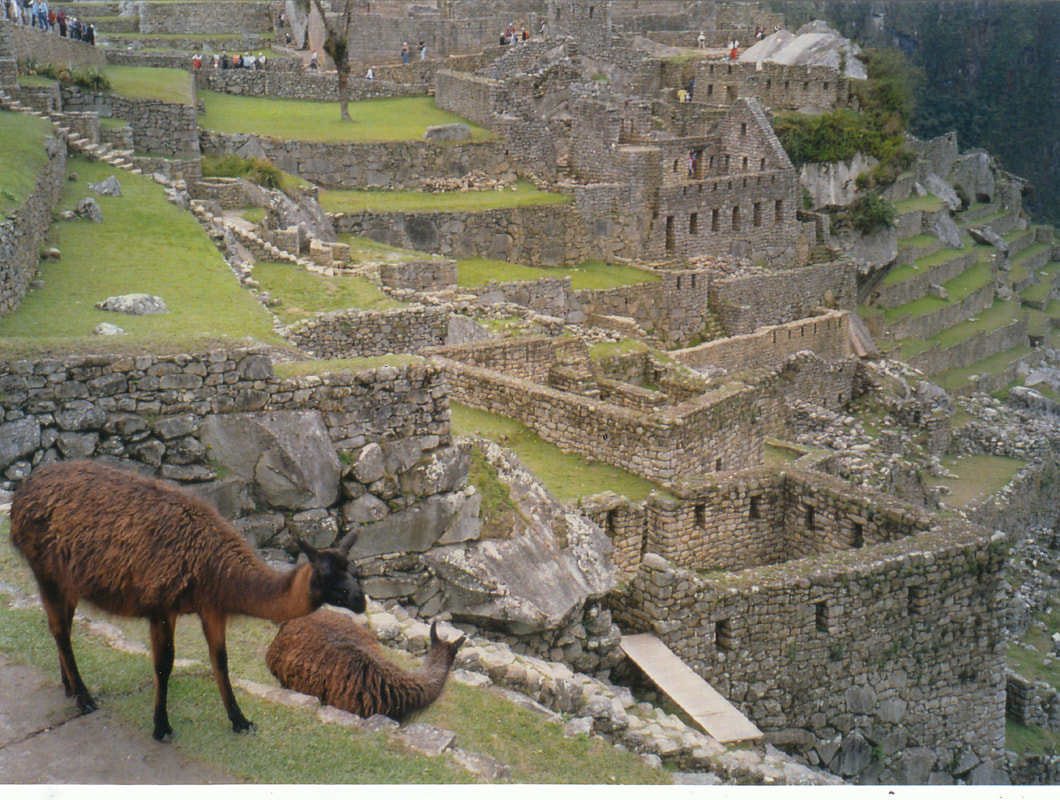
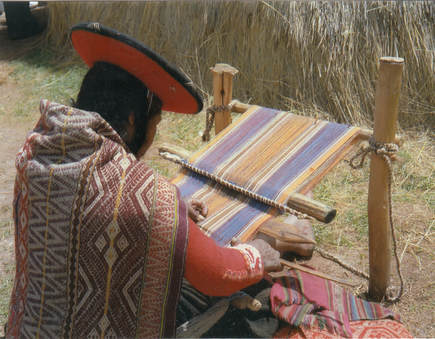
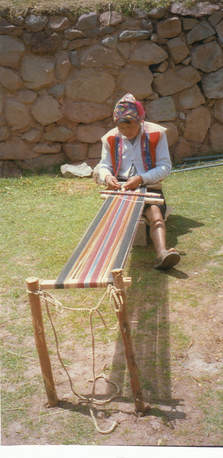
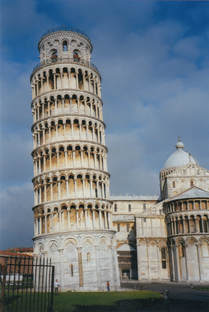
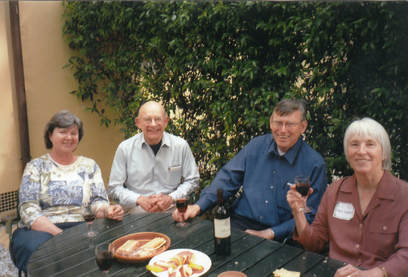
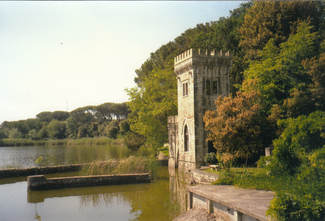
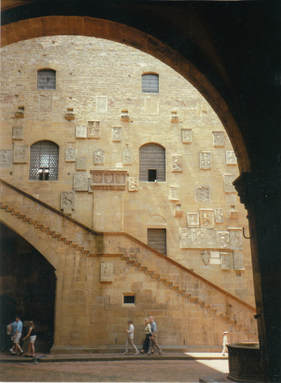
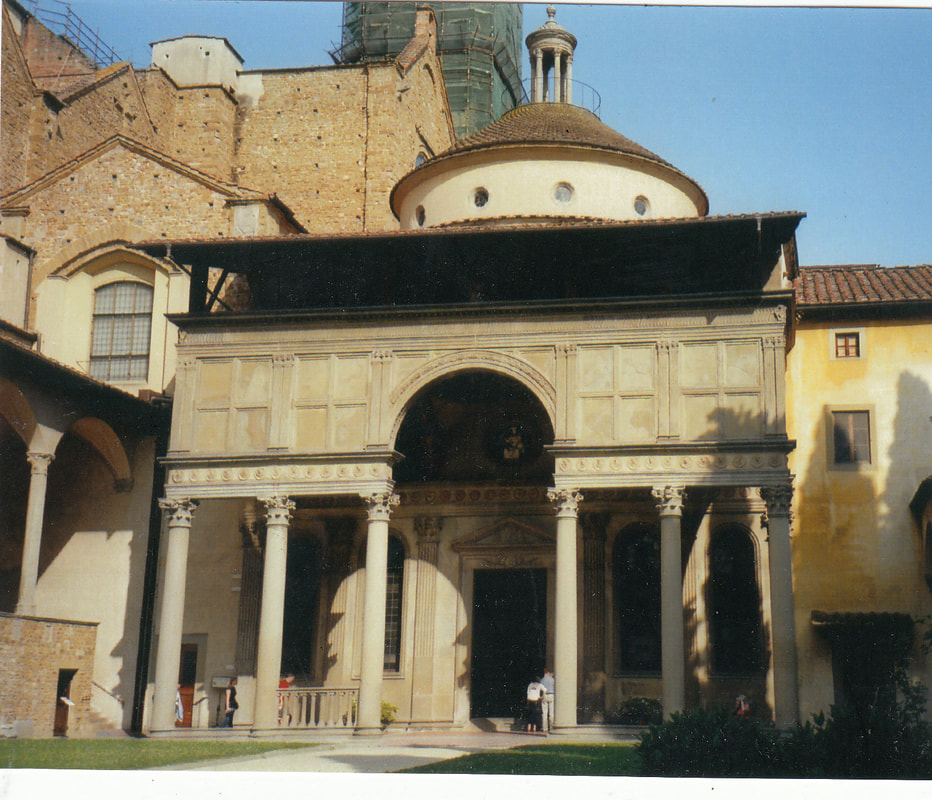
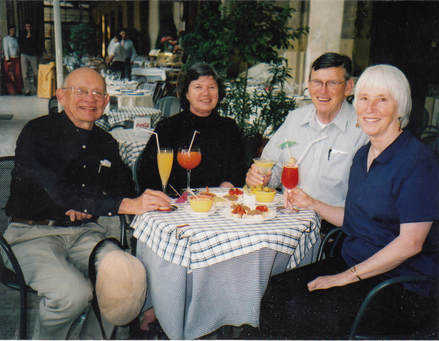
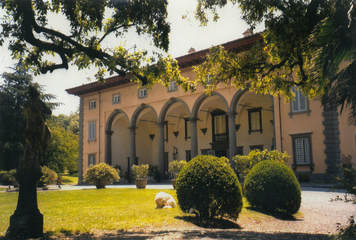
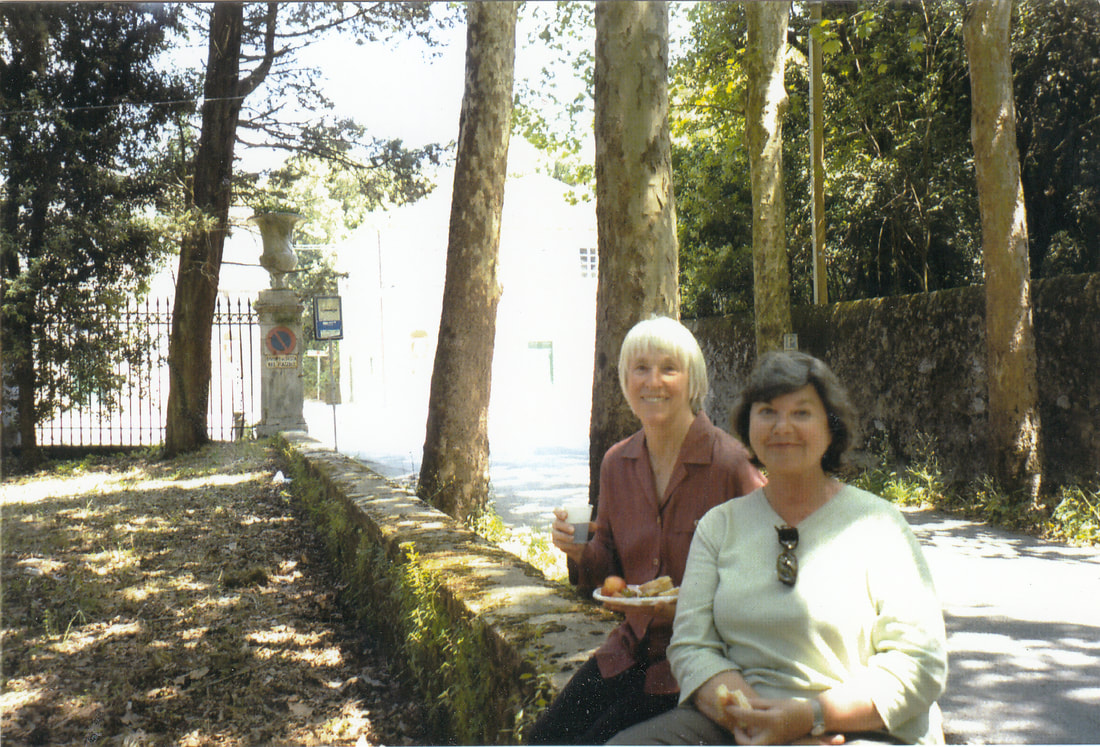
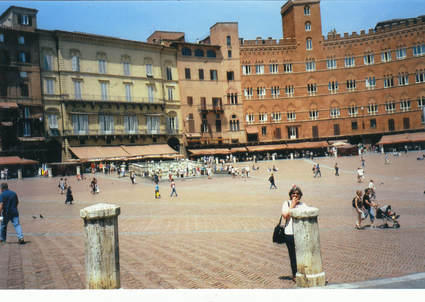
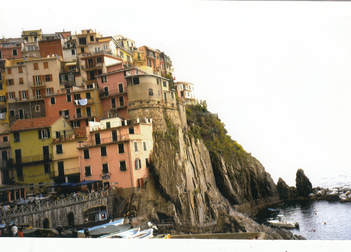
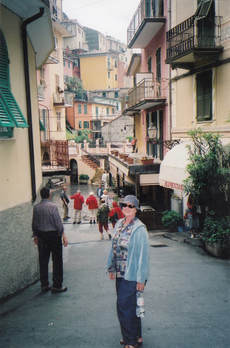
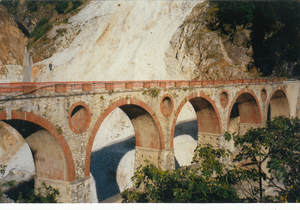
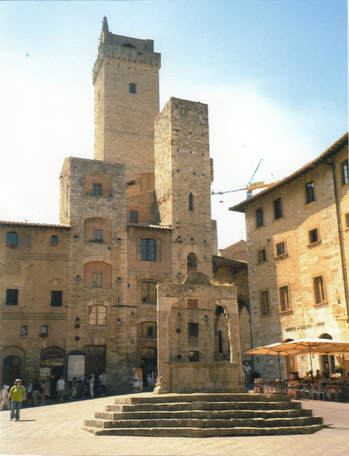
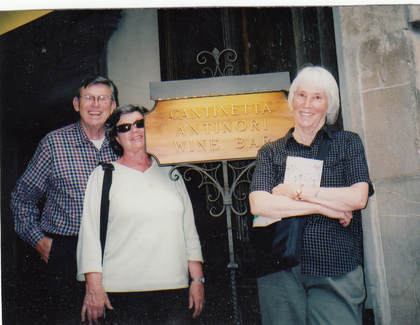
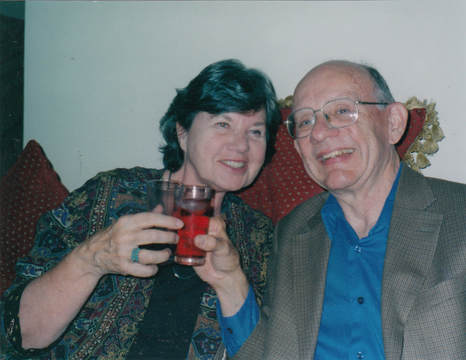
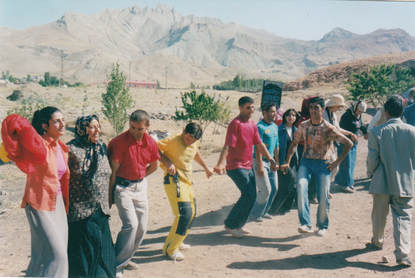
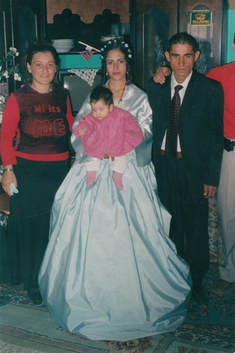
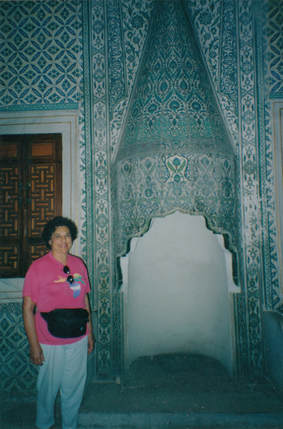
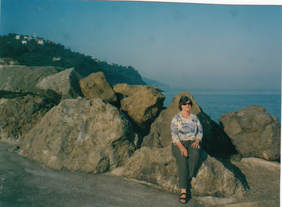
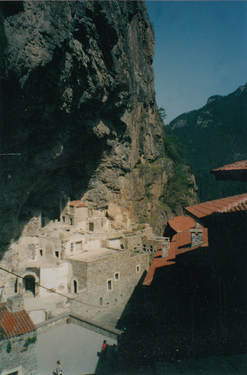
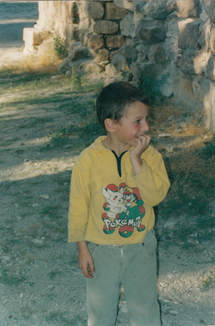
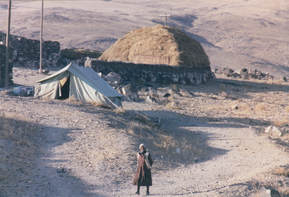
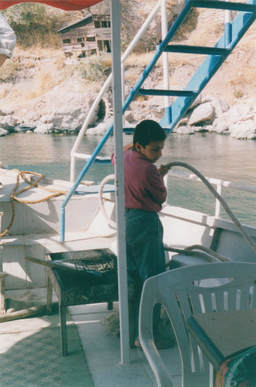
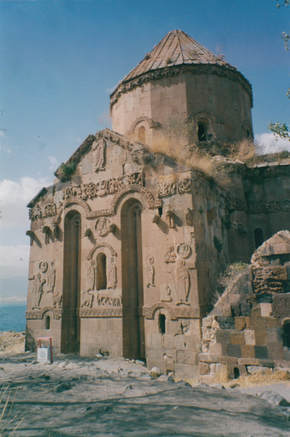
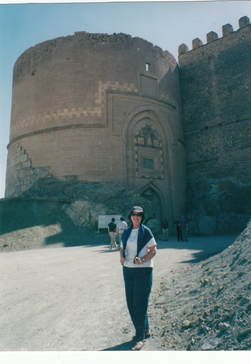
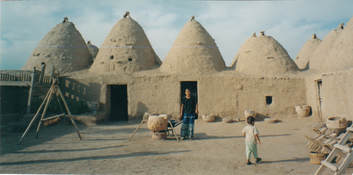
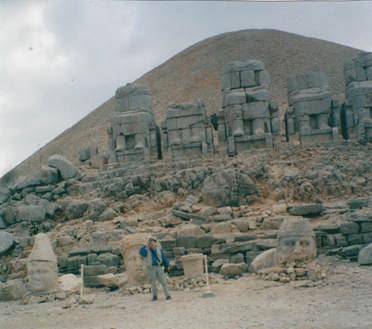
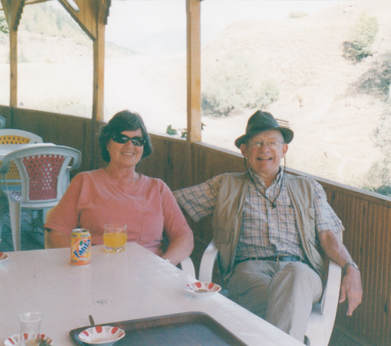
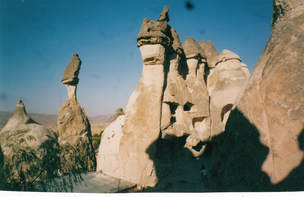
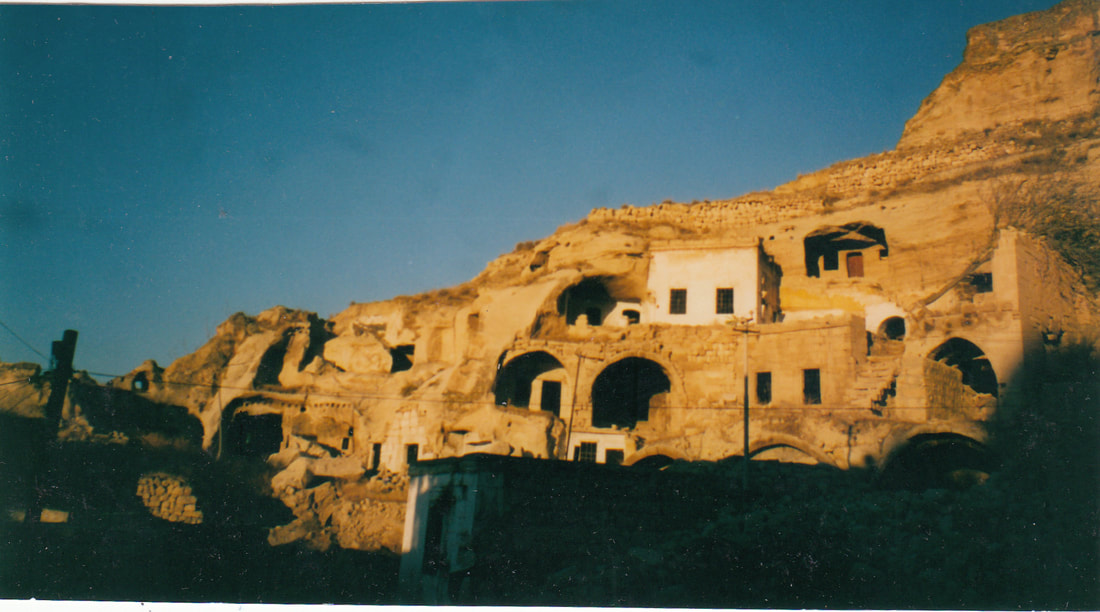
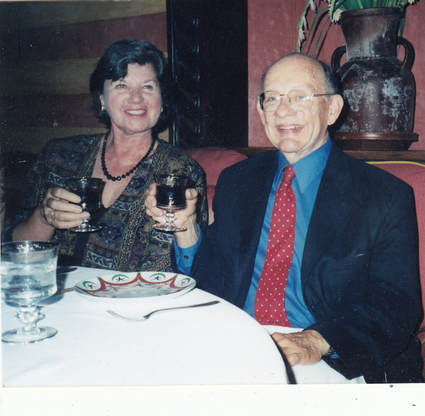
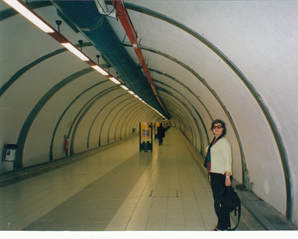
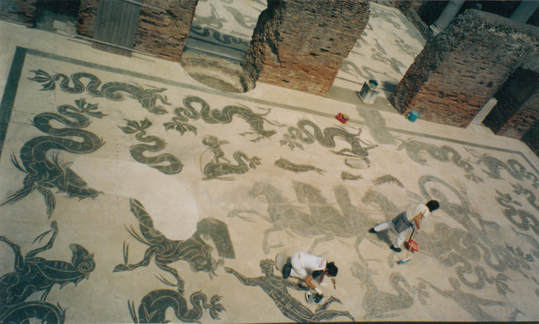
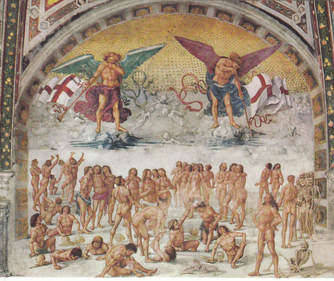
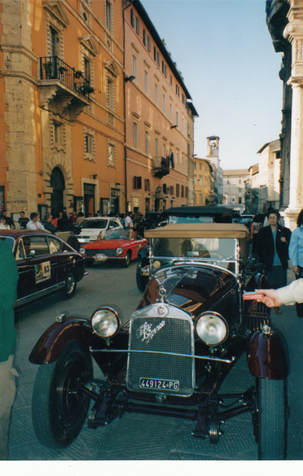
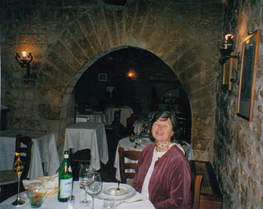
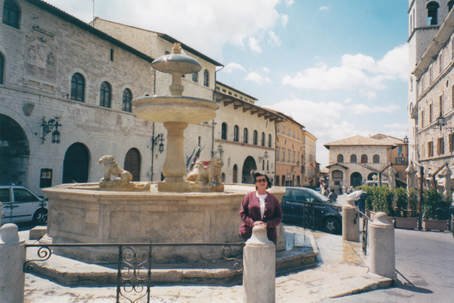
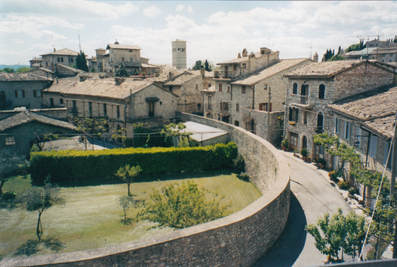
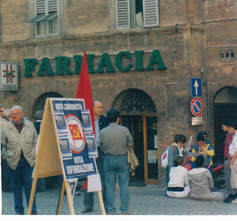
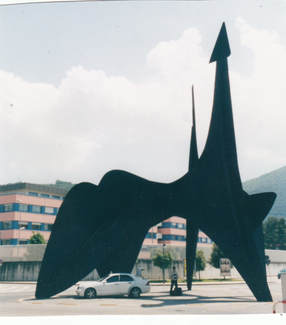
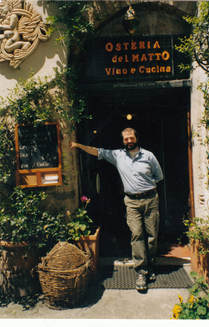
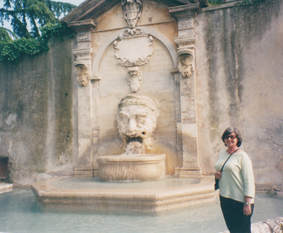
 RSS Feed
RSS Feed